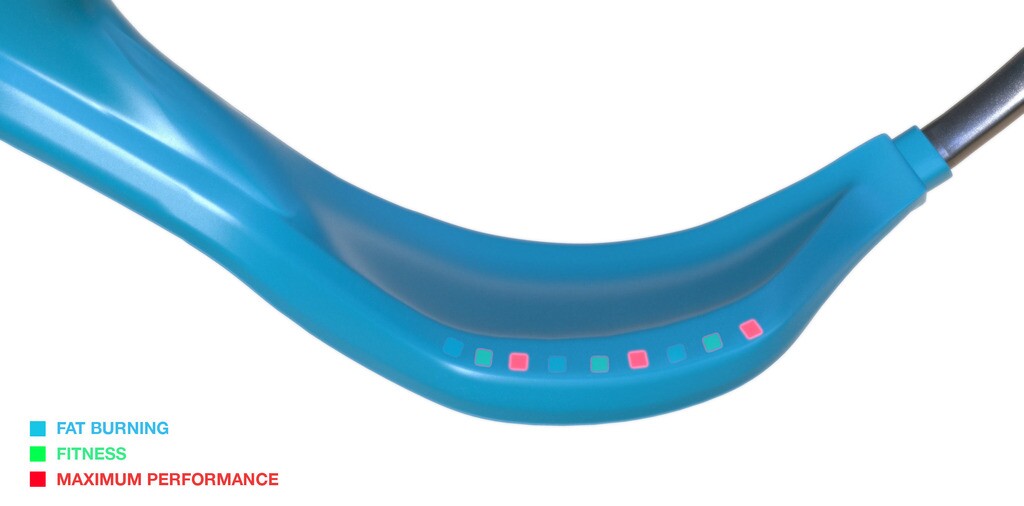For pretty much any endurance-oriented sport, athletes like to be able to reach a target hear rate when they’re training. Typically, this is done using a sensor integrated into a chest strap, that’s linked to a sports watch, smartphone, or even to a heads-up display in a set of glasses. While there are sports watches designed for swimmers, users have to stop swimming in order to read them. With the Instabeat, however, swimmers get the heads-up option in the form of colored LEDs that are projected through the bottom of their goggles.
The Instabeat device attaches to the head strap of a regular set of goggles in such a way that it’s able to read the wearer’s heart rate from their temporal artery, via an optical sensor – apparently it works with any head size. This means that no chest straps or other peripherals are required. It automatically turns itself on when it detects a pulse, and turns itself off when removed.
An onboard microprocessor keeps track of the heart rate in real time, and illuminates color-coded lights that indicate whether the wearer is currently at their own user-specific Fat Burning, Fitness, or Maximum Performance heart rate. These lights can be seen through the right-hand goggle lens, simply by glancing down.

The device also calculates how many calories have been burned, plus built-in motion sensors allow it to keep track of laps, flip turns and breathing patterns. This data can be accessed on a dashboard display after the swim, when the Instabeat is synced with a computer via USB.
The designers of the device are currently raising productions funds, on Indiegogo. A pledge of US$139 will get you an Instabeat, when and if they reach production. The estimated retail price is $149.
More information is available in the pitch video below.
Source: Indiegogo








